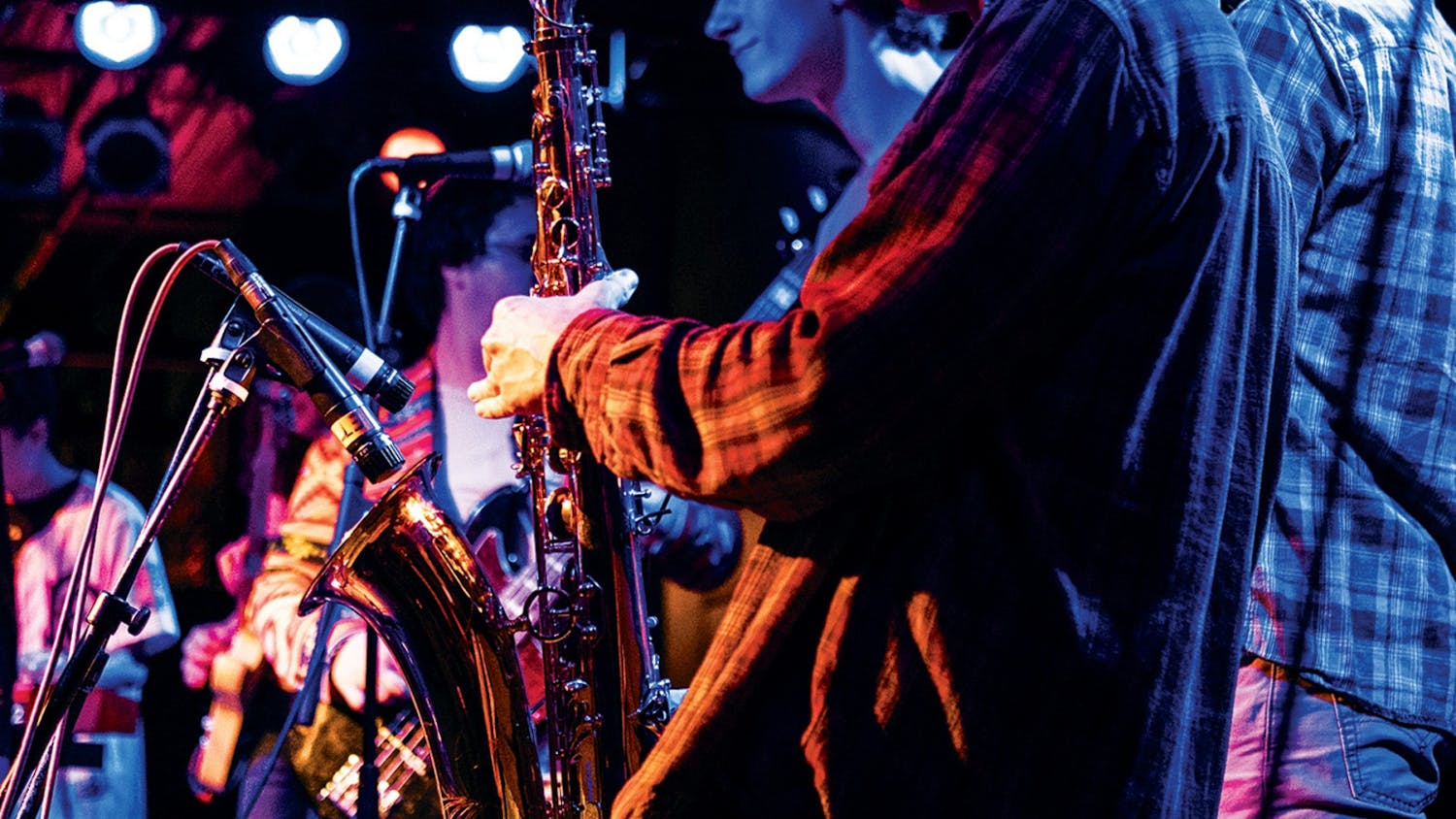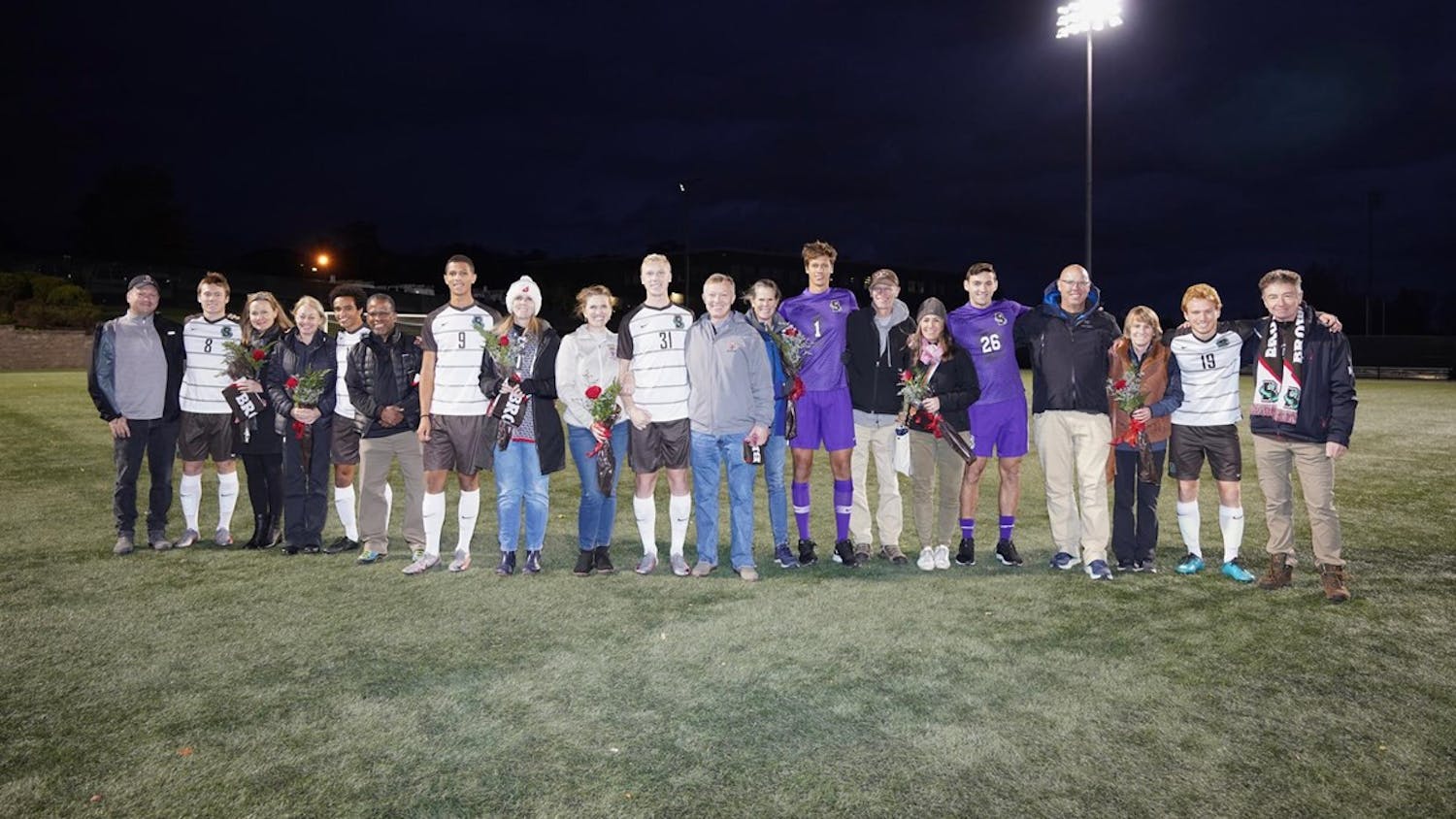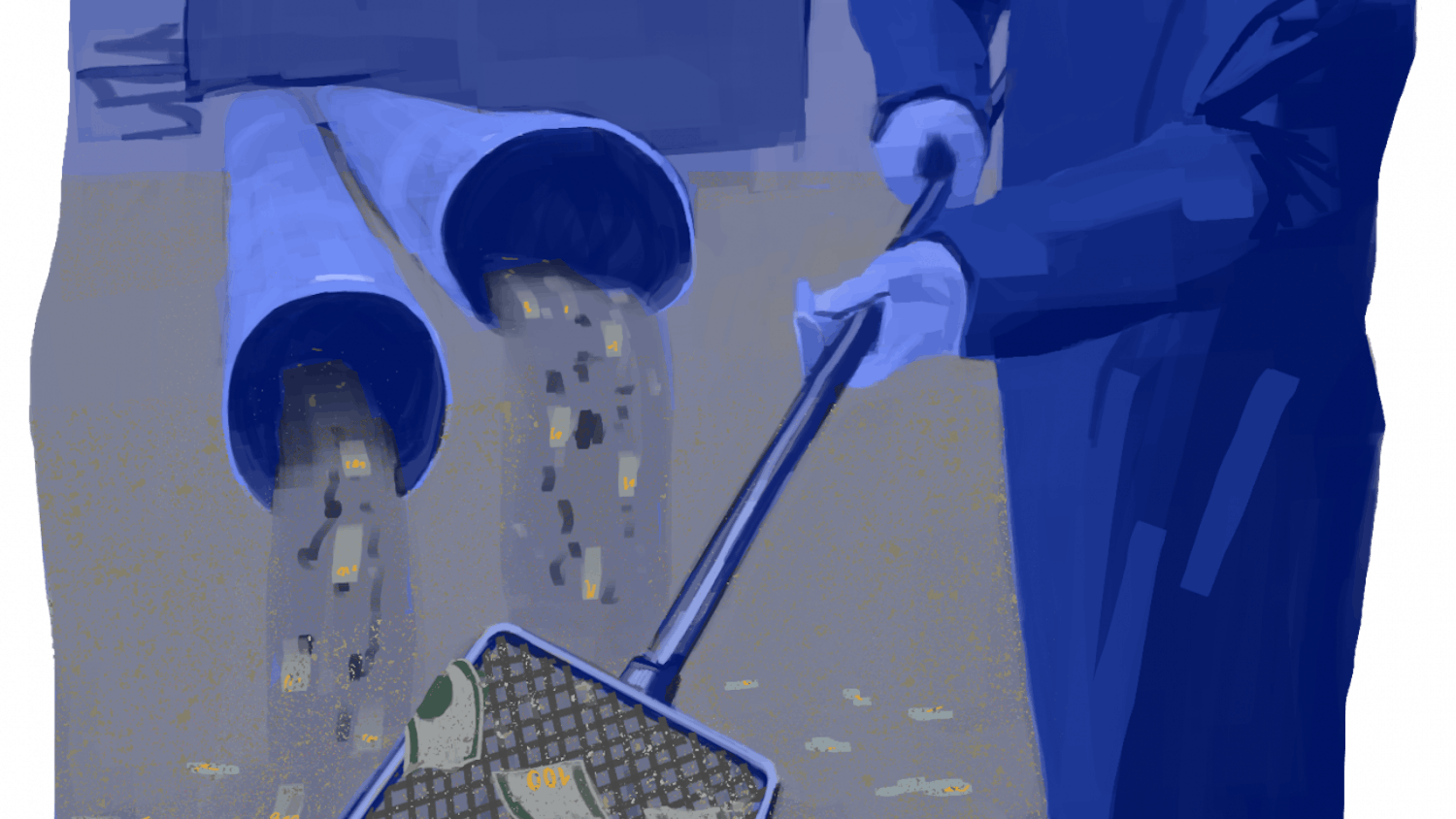When Jude Corbett gets ready to read, his voice changes. Like a defensive lineman, it crouches and sneers at his opponent, daring him to make the first move.
"95.5 WBRU," his voice says. "The soundtrack to that stuff" — a pause punctuates the track — "you do in the shower."
The edge of Corbett's voice slides off into the silence of the radio station's production room.
Corbett, a professional voice-over artist, is known locally as the "voice of WBRU," a commercial alternative radio station operated by Brown students.
Encompassing fields as diverse as station promotions and nature documentaries, voice-over represents a talkative yet rarely talked-about facet of mass media. Behind the scenes with production teams, voice-over artists help to explain and enhance messages both on the radio and on the screen.
Finding a voice
Corbett found his interest in voice-over early. As a kid, he liked to mimic the voices he heard on television.
"I didn't know you could actually do this for a living," he said.
Later, he joined his college radio program, which ran KCLC, as a part of his mass communications major. After graduating, he worked as a disc jockey and in production at radio stations before landing his first freelance voice-over job in Philadelphia.
"People started liking what I was doing there, and I branched out into Pittsburgh and Providence," he said. WBRU was one of Corbett's first clients.
In radio, voice-over artists play multiple roles. Some, like Corbett, have standing relationships with stations and are hired to record promotions and sweepers — segues between songs that provide the station's call letters and frequency — on a regular basis. Other voice-over artists find work recording commercials for businesses that are played on multiple stations.
According to Ann DeWig, a Phoenix-based artist who voices for WPRO in Providence, the trade's practitioners tend to focus on niches, ranging from quick sound bites to feature-length documentary narration.
"There is crossover," she said. "It's just more common to find someone as an expert in a certain field."
Both Corbett and DeWig have explored beyond radio's bounds. Both have voiced TV commercials — Corbett usually does ads for Budweiser during the NCAA basketball tournament, and DeWig is working on ads for Johnson and Johnson. Corbett also voices most of HBO's "First Look" segments, while DeWig worked on NBC's promotions for the Super Bowl last winter.
Though she said she feels proud of her high-profile work, DeWig established the instability of freelancing.
"We always get fired from every single job we've ever done," she said.
DeWig said she is interested in narrating documentaries. Because narrations run considerably longer than television or radio spots, the artist has the opportunity to experiment and make the piece his or her own.
"You can seat yourself into a story," she said.
Corbett has narrated television programs, but he said he still likes radio because he has the most experience in it. He has developed several delivery styles for radio, and he enjoys applying them to stations' scripts.
In the production room
When Corbett works with WBRU, voice-over follows a set process that begins when the station sends him copy for a promotion or a sweeper. Corbett records a read at his studio in Chicago, saves it as an MP3 file and uploads it for the station.
The sweepers and promos voiced by Corbett contribute toward building an audio identity that listeners identify with the station — the voice of WBRU. His voice introduces shows, songs and bands throughout the day.
"When listeners hear Jude doing a promo, they think, ‘Oh, that's BRU,'" said Diana Wollach '10, production director at WBRU.
While Corbett forms the main focus of each voice-over track, Wollach said the production team manipulates the track in a variety of ways. Sound effects and music "beds" — tracks that play under the voice — enhance Corbett's recording. In some cases, the casual listener will not even notice the changes.
"We actually take out all the breaths in between sentences," Wollach said.
"A promotion typically takes me two hours to do," she added.
While the immediate purpose of production is to create an engaging sweeper or promo, Wollach said the work more intimately acquaints her and her team members with music.
This heightened sensitivity to audio tracks not only serves to maintain WBRU's own standards but also helps production team members in the post-collegiate world in any industry that requires sound editing.
"You really get a feel for music and sound and beats," Wollach said.
WBRU's commercial production group creates commercials in-house for some businesses that advertise with WBRU, giving students an opportunity to try voice-over
themselves.
"We have some people who are really, really into voicing and crank out these amazing voices," Wollach said.
Learning to speak
For his part, Corbett said he encourages students to try voice-over, even if they do not know how their voices will sound on air.
"The more unique your voice, the more successful you'll probably be," he said.
DeWig said all successful voice-over artists share one trait in common: confidence. Both artists agreed that training in acting helps create and deliver a voice.
"If you can do some acting, take some improvisation classes, that teaches you to be more flexible," Corbett said.
And reflecting on the various subjects he voices, Corbett added one final piece of advice to aspiring artists searching for confidence. "Know what you're talking about. Even if you don't know what you're talking about."




